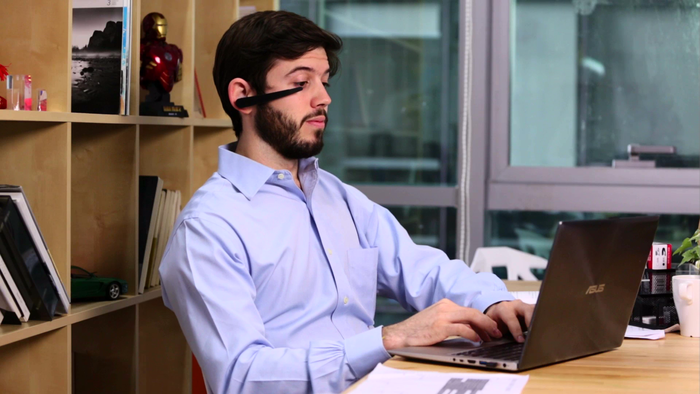Apparently some people struggle to know whether they feel alert or not.
Vigo has a solution to this questionable problem, with its wearable device that “quantifies your alertness.”
This is taking the fervor surrounding wearable devices and the quantified self too far. Whatever happened to listening to your body? Do we need devices to tell us when we are hungry and have to pee, as well?
This goofy looking headset tracks your eyes and motion to measure your energy patterns throughout the day and alerts you when you are getting drowsy.
Founder Jason Gui describes it as a “personal energy gauge” and said Vigo is the first ever device to “tackle the problem of unintentional drowsiness” — something caffeine has been doing for thousands of years.
“Unintentional drowsiness is a huge problem that we all face,” Gui told VentureBeat. “Every year there are over 100,000 crashes and 1,500 deaths due to drowsy driving in the US alone. The NYC train crash was due to the driver dozing off. Over 60% of drivers report getting drowsy at the wheel. Research also says that $150 billion was lost in productivity due to workplace tiredness. We are creating a solution that tackles this problems by identifying when you’re getting drowsy and alerting you when you are.”
One flaw in Gui’s reasoning: People who are driving drowsy know they are drowsy but are driving anyway because they have somewhere to go. And surely we know we are tired at work, but push through, because it’s work and we have to do it. Lastly, the desire to stay on top of alertness levels can’t be so strong that you’re willing to look like a character out of Star Trek.
However Gui said that the data Vigo collects can be used to help people adopt better habits by giving them recommendations about what to do when. For example, you are tired, take a nap. Groundbreaking stuff.
“Vigo can nudge you when you’re dozing off and help you see patterns of when you’re most and least alert so you can manage your routine more effectively,” he said.
The technology itself is kind of interesting, I’ll give Vigo that. It has an infrared sensor that looks at “blink data” such as blink rates, blink durations, eye closing/opening time ratios. The device’s accelerometer tracks head motion, head nods, or if the user has been sitting idle.
All this data is run through an algorithm to determine the drowsiness/alertness level. Users can decide how they want Vigo to get their attention (vibrations, LED notifications, songs, etc.), and it comes equipped with Bluetooth Low Energy, so it can also function like a Bluetooth headset.
Gui said the ultimate vision is to take this technology and fit it into other “form factors,” like sunglasses, safety googles, or helmets, and explore partnerships with taxi and truck companies, airlines, security guard companies, and car manufactures. This use case makes far more sense to me than targeting individual consumers.
The company was born out of a senior project by Gui and his cofounders Drew Karabinos and Jonathan Kern at the University of Pennsylvania, who all majored in mechanical engineering.
In short, smart team, interesting technology, terrible use case.
Vigo has gone through more than 10 iterations this year and participated in hardware accelerator program HAXLR8R, which takes place in Shenzhen, China. The team is currently raising $50,000 on Kickstarter to get Vigo into production and has raised a surprising $20,000 so far.
VentureBeat's mission is to be a digital town square for technical decision-makers to gain knowledge about transformative enterprise technology and transact. Learn More

